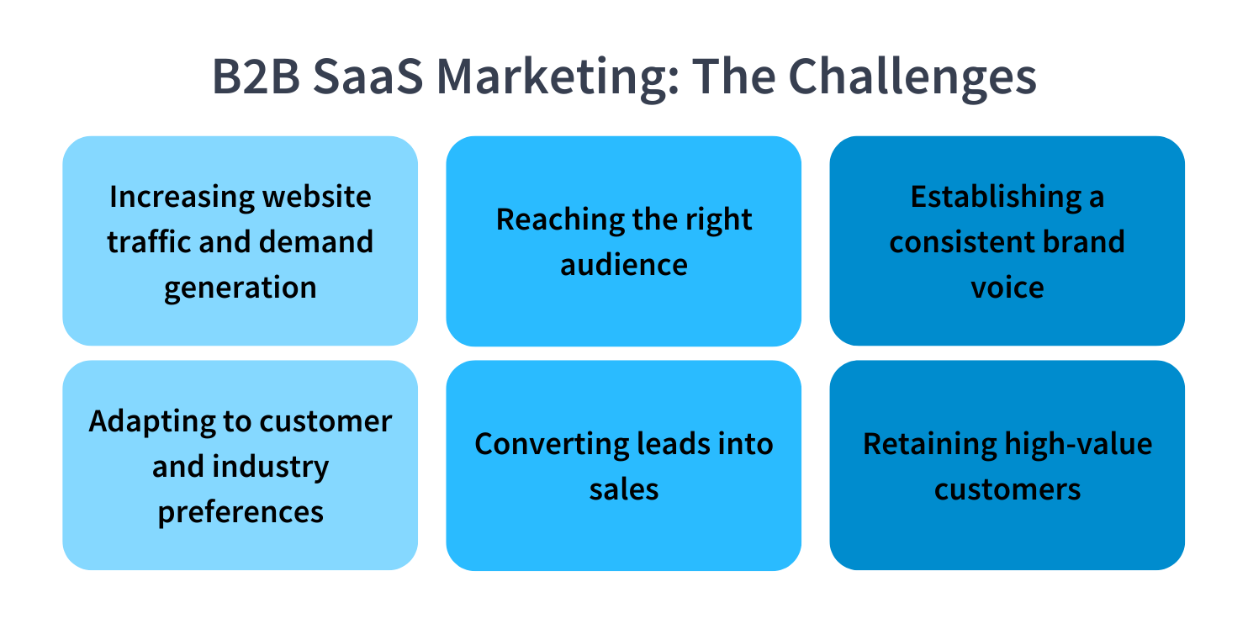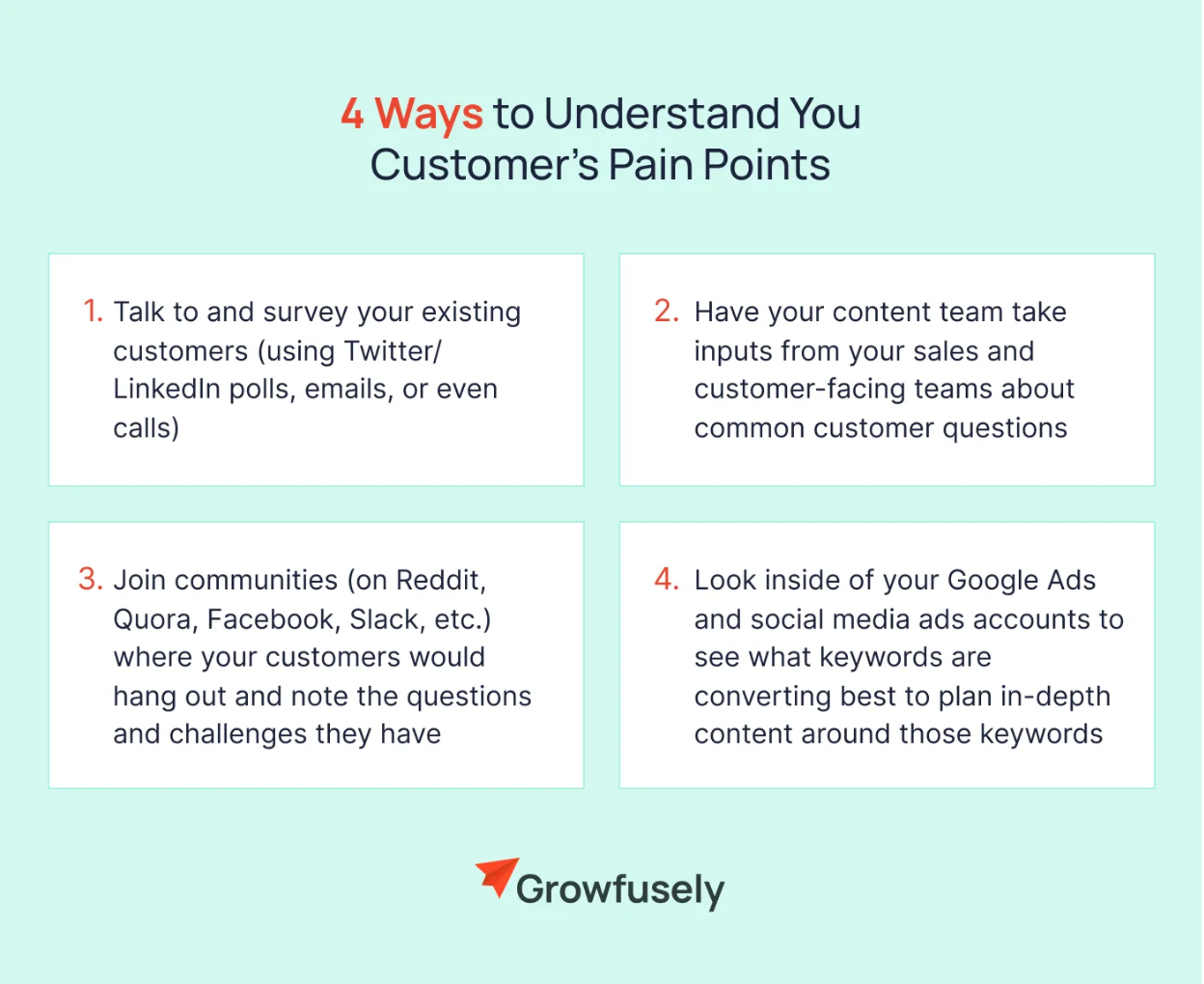Content Marketing for SaaS: Strategies That Actually Work
Proven Techniques to Drive Growth, Retain Users, and Boost ROI for Your SaaS Brand
Content Marketing for SaaS is different from other forms of content marketing. Here, a marketer has to typically prepare a content marketing plan for a specific audience who is looking for value-added benefits.
Usually, SaaS product audiences are businessmen, corporations, organizations, or (in some cases) regulars. The unique nature of SaaS products demands a different content marketing approach.
This article delves deep into why content marketing for SaaS is different from other forms of marketing. Also, we have provided a step by step process for creating SaaS content marketing strategy. So, read on.
Content Marketing for SaaS Companies is Different – Here’s Why

SaaS companies have to take a slightly different approach to marketing compared to other industries. And there are some specific reasons defining why that is —
- As a content marketer, you’re promoting both a service and technology.
- The prospects are mostly decision makers who prioritize benefits over only convenience. So, a B2C approach doesn’t work.
- SEO content marketing is very important for a SaaS product.
- As a marketer, you have to educate the prospects rather than hard-sell the features.
- Your sales rely on customer reviews.
- Marketers need to rely on reviews.
- The SaaS content strategy also needs to promote repeat business.
Selling your SaaS products is a lot different from selling a B2C product. As a seller, a business is responsible for the product and the service that goes with it.
It includes offering the right type of customer support, resolving issues, updating the service from time to time to support repeat business, and so on.
Also, a SaaS buyer always does their research before buying or subscribing to a plan. They learn about a product from different digital resources.
Whitepapers, online communities, white papers, and app marketplaces are different digital touchpoints for SaaS content marketers to target.
SEO is also a big factor in B2B SaaS marketing. These product users mostly find products through the Google Search engine.
Most SaaS buyers are also keen on opening their emails. So, email marketing can also be part of a strong SaaS content marketer.
Content for Marketing SaaS: A 7-Step Strategy
Now that you understand why SaaS marketing is different from other types of product marketing, here’s a process to help you build one.
1. Identify Target Audience
Identifying the target audience is the foundation for any type of marketing, and SaaS is no exception. Most SaaS companies rely on different social media platforms and Google Search insights to learn about their clients.
Social media platforms such as Facebook and LinkedIn offer insights into customer behavior with granular details. It makes it easier for marketers to build customer profiles. Start by building a list of questionnaires that help you understand your customer and their pain points.
As a marketer, start by identifying whether your ideal customer is a business owner or consumer buyer, outlining their age, gender, income level, spending capacity, industry, social media profiles they follow, and brands they usually buy from.
2. Understanding Pain Points

There are most likely other alternatives to the SaaS product you are offering on the market. As a SaaS product maker, it’s important to understand why the audience would buy from you.
The answer lies in their pain points. Put yourself in the customers’ shoes and create a customer journey map. This map should help you identify the problems your customer is going through. Your product should be different from your competitors, and it must solve the gap they leave in their services.
3. Identify Relevant Keywords
SEO is a big factor in SaaS content marketing. That’s why keyword research for your SaaS product must be part of the process.
The keywords can be informational, transactional, commercial, or navigational in nature. In the awareness stage, they would want to know how to solve a problem in their industry.
Then comes the process of discovering different brands or SaaS products that solve their problem. At the bottom of the funnel, you create content where you position the product as a direct solution to the customer’s pain point.
All of these phases require relevant keywords that match the customer’s search intent and help the search engine recommend your product to them.
4. Your Campaign Goals and Metrics
The next step into SaaS content Marketing is to define relevant metrics helping with your content marketing success. Understand what the different intentions are of all of your content marketing stages.
Next, work on different measurable metrics or KPIs that help you measure effort against your marketing intentions. Typically, SaaS marketers analyze website visitors, session duration, SaaS lead generation, website bounce rate, churn rate, and retention percentage.
5. Build Content Production Procedures
Now that the target audience is outlined, pain points understood, and KPIs are set, it’s time to go ahead with content production.
As a content marketer, it’s time to build a content production plan that helps a marketer execute their campaigns. Start by researching topic ideas based on the target audience’s customer journey.
Next, prepare a content planning calendar and share it with the writers and creators who are working for you. The next phases include creating, editing, and scheduling publishing for the content.
6. Outline Distribution Channels
This is also another crucial step in your SaaS content marketing journey. Outline different distribution channels and platforms where you can share your content. Identify the place where you’ll publish your content.
Start by thinking how frequently you’ll publish and get your content out there. It’s critical to understand which platforms your target audiences spend most time on.
Do you have to index the content on your blog or have a resource section? Does the content have to be publicly available, or do you have to publish it on third party blogs?
It’s critical to outline these areas to ensure the effectiveness of your SaaS product marketing.
7. Monitor Results & Improve Strategy
The next step is all about ensuring that you’re achieving results from your campaign. That’s why it’s critical to measure whatever input you’re giving to get those results. So, start to monitor the content marketing performance and factor them against the KPIs you’ve selected earlier.
- Is the website traffic going up? If yes, what percentage of that is converting?
- How many software trial registrations are you getting?
- Are customers leaving after the trial use?
- Is the bounce rate improving?
These are some common parameters to check when monitoring the performance of your SaaS content marketing strategy.
Conclusion
SaaS content marketing requires a unique approach where educating the clients is more important than impressing them. This is unlike B2C marketing where impressing the customer is more relevant.
Also, SaaS products rely more on different forms of written content than videos, or audios – which is why whitepapers, blogs, and newsletters are more important for this type of marketing.
In addition, videos and podcasts also play crucial roles in specific stages of SaaS marketing. To conclude, the above-mentioned strategies are the core fundamentals of content marketing for SaaS marketers to elaborate on.




